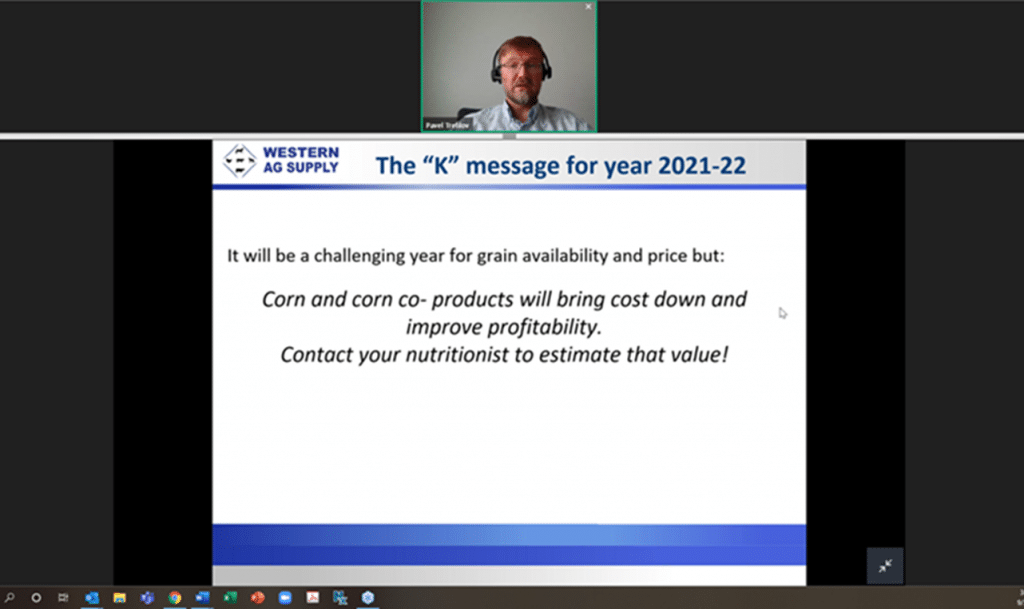To elaborate on how corn and distiller’s dried grains with solubles (DDGS) factor into cattle and swine rations in Canada, the U.S. Grains Council (USGC) partnered with Gowans Feed Consulting to host the webinar series, Opportunities for U.S. Feed Grains in Western Canada, in late September. Due to drought in western Canada, the country has experienced a significant reduction in barley and wheat supply, creating an ingredient deficit for feed where U.S. corn and DDGS have been able to fill the demand.
Sixty participants, including cattle and swine producers, feed millers and traders, tuned in to better understand the economic and nutritional value of U.S. corn and DDGS in cattle and swine rations and receive an overview of the current market conditions for various U.S. feed options. The cattle-focused webinar replaced the Council’s annual Corn & DDGS Roadshow in Alberta, while the swine-focused webinar was the Council’s second engagement with Western Canadian swine producers, including the Hutterite community.
“Canada is consistently a top export destination for U.S. feed grains and a strong trade partner for the United States. In a year where drought conditions have caused limited domestic supply and volatile market conditions, U.S. suppliers are ready to prove their reliability and help meet the increased feed demands of their northern neighbor,” Emily Byron, USGC manager of global programs, said. “The Council was excited to provide a virtual space for our members and Canadian end-users to discuss opportunities for increased use of U.S. corn and DDGS in Canadian swine and cattle diets.”
Byron and Reece Cannady, USGC manager of global trade, represented the Council at the event, while Tom Dowler, Katie Stehr, Danilo Sotto and Pavel Trefilov represented the Council’s Canadian partners, Gowans Feed Consulting and Western Ag Supply. Several USGC members were also involved in the event, providing insights on U.S. grain quality, availability and logistics for the upcoming marketing year.
Dowler kicked off the event, introducing speakers and facilitating question-and-answer sessions.
“While always better to get together face to face, this has also provided the opportunity to have some great speakers from all over North America,” Dowler said.
During the cattle-focused webinar, attendees had the opportunity to hear about grain movement and rail logistics from Jon Harman of the Canadian Pacific Railway.
“We’ve seen a lot of non-traditional moves this year, such as potentially moving U.S. grain out of Vancouver, and then also wheat from Chicago to ethanol plants in northern Saskatchewan and corn moving from Minnesota to Ohio, which is traditional corn country,” Harman said. “It’s a year of non-traditional moves and we’re here to help. We’re trying to make it as easy as possible for everybody to connect and do business.”
The Council looks forward to continuing work with the Canadian livestock industry to address its low supply of domestic feed grains by replacing the ingredients with U.S. corn and DDGS.
Find out more about the Council’s work in Canada.
About The U.S. Grains Council
The U.S. Grains Council develops export markets for U.S. barley, corn, sorghum and related products including distiller’s dried grains with solubles (DDGS) and ethanol. With full-time presence in 28 locations, the Council operates programs in more than 50 countries and the European Union. The Council believes exports are vital to global economic development and to U.S. agriculture’s profitability. Detailed information about the Council and its programs is online at www.grains.org.

